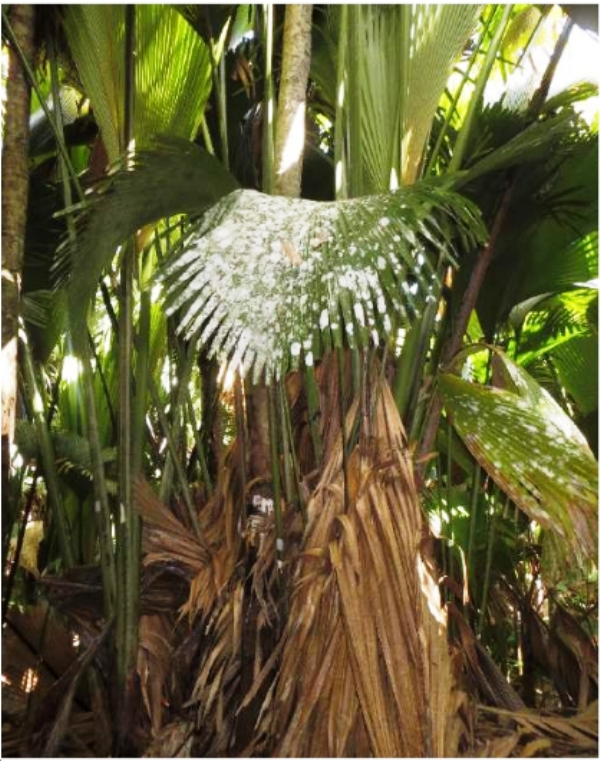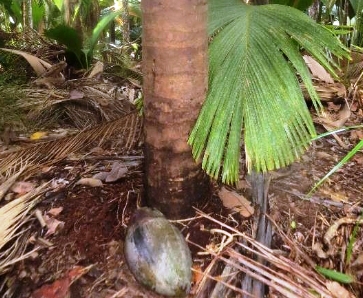Short distance seed dispersal results in strong genetic structuring in the coco de mer |21 August 2017

An SIF-co-authored paper was recently published in peer-reviewed journal Conservation Genetics on seed dispersal patterns and genetic structure of coco de mer populations.
The lead author, Emma Morgan, completed her PhD thesis at the end of last year, investigating genetic and demographic processes underlying reproduction in the coco de mer. Following three successful field seasons at the Vallée de Mai and elsewhere on Praslin and Curieuse; and analysis at University ETH Zurich, Switzerland, the first results are now available.
The iconic coco de mer palm produces the largest seeds in the plant kingdom but how far do these seeds disperse; and what effect does this limited dispersal potential have on genetic diversity and inbreeding in the remaining coco de mer populations? Using a molecular genetic
method, each tree in the sampled sites was genotyped using 12 microsatellite loci; and from this, measurements of genetic  diversity were calculated. The mother and father trees of each young plant were identified, and it was found that the average seed dispersal distance was just 8.7 ± 0.7 m. This resulted in an intense fine-scale spatial genetic structure, with neighbouring pairs of male and female trees being closely related. Inbreeding levels were high, and genetic diversity levels were also relatively high across all populations, although these differed in disturbance and habitat fragmentation.
diversity were calculated. The mother and father trees of each young plant were identified, and it was found that the average seed dispersal distance was just 8.7 ± 0.7 m. This resulted in an intense fine-scale spatial genetic structure, with neighbouring pairs of male and female trees being closely related. Inbreeding levels were high, and genetic diversity levels were also relatively high across all populations, although these differed in disturbance and habitat fragmentation.
The results support what was already suspected – that seed dispersal distances are mainly very short, and seedlings usually establish in dense clusters around the mother tree, or if they are growing on a steep slope, in elongated ellipses downhill of the mother tree. The high relatedness levels at all life stages is consistent with the idea that mating between nearby pairs is common in coco de mer.
The evolution of a very large seed has resulted in an unusual breeding system characterised by high levels of inbreeding. This raises the question of how Lodoicea avoids the problems of inbreeding depression? One possibility is that deleterious recessive alleles have been purged from this long-lived species over generations for thousands of years. Another is that infrequent long-distance pollen or seed dispersal (e.g. downhill) may be sufficient to prevent inbreeding depression at the population level. Although inbreeding does not appear to reduce reproductive success of coco de mer, the potential consequences of disrupting the natural patterns of genetic structure are unknown.
We clearly still have much to learn about this fascinating species but future research investigating the pollination, germination and establishment consequences of moving seeds to alternative sites will help to inform its management and conservation.
SIF




